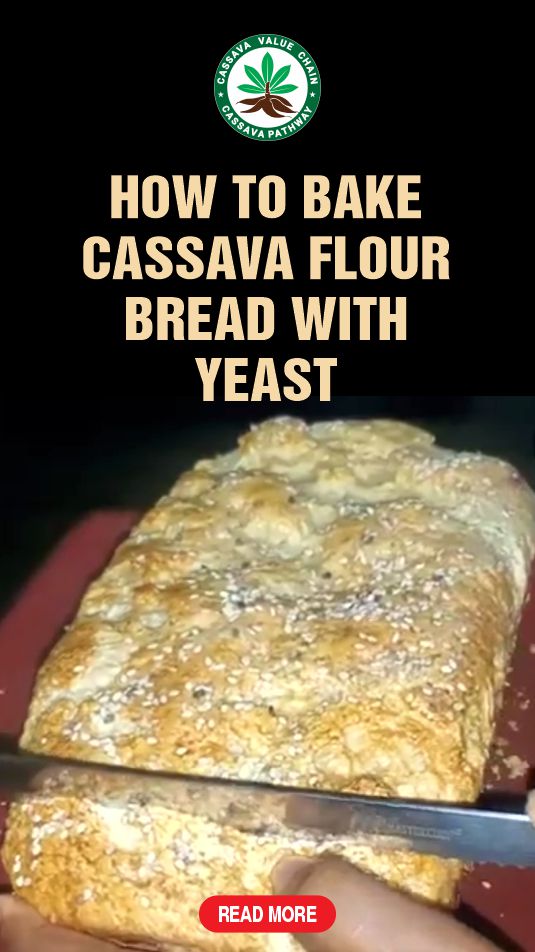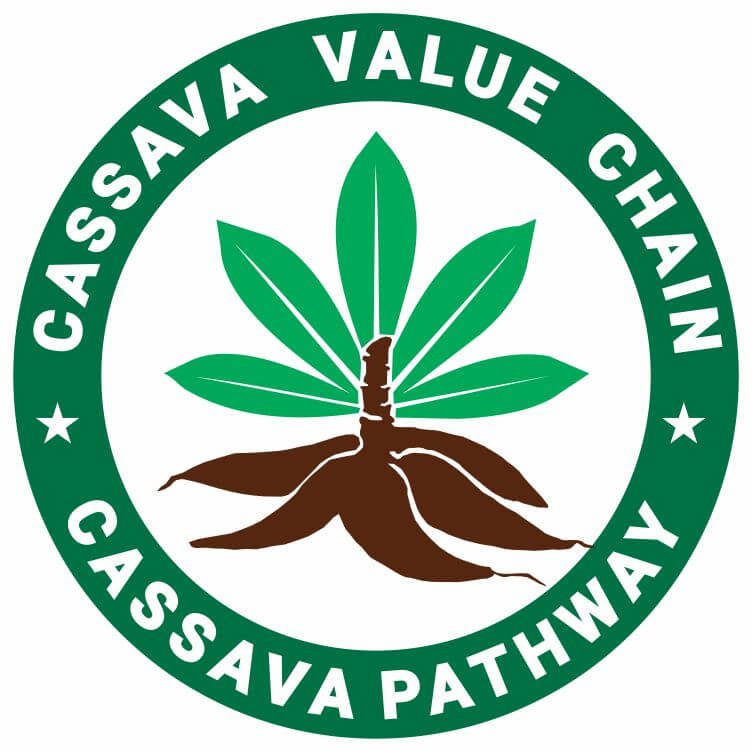Here is a breakdown of the cassava flour bread recipe with yeast. Bake soft, fluffy cassava flour bread with yeast to deliver great texture and flavor.
Want to bake soft, flavorful cassava flour bread with yeast? This recipe gives you a gluten-free, airy loaf with a perfect texture.
Cassava flour, made from cassava yuca root, brings a mild, slightly nutty taste while yeast helps it rise beautifully.
Unlike yeast-free versions, this bread has a lighter, fluffier crumb, making it ideal for sandwiches, toast, or enjoying freshness.
Whether you’re exploring gluten-free baking or looking for a new homemade bread recipe, this guide will walk you through every step.
From selecting the right ingredients to achieving the perfect rise, you’ll learn how to make cassava flour bread with yeast effortlessly.
Ready to bake? Let’s dive into the recipe and create a delicious homemade loaf!
Related: Different Types of Cassava Bread
Table of Contents
- What is Cassava Flour Bread with Yeast?
- Understanding Yeast in Cassava Flour Bread
- Ingredients and Their Roles in Yeast-Based Cassava Flour Bread
- Step-by-Step Guide to Making Cassava Flour Bread with Yeast
- Troubleshooting Common Issues
- Frequently Asked Questions About Cassava Flour Bread with Yeast
- Conclusion

What is Cassava Flour Bread with Yeast?
Cassava flour bread with yeast is a gluten-free bread made using cassava flour and yeast as the leavening agent. Unlike the yeast-free version, this bread undergoes fermentation, allowing it to rise and develop a softer, airier texture.
Cassava flour gives the bread a mild flavor and slightly chewy consistency.
Yeast helps create a light, fluffy crumb by producing carbon dioxide during fermentation.
This bread is a great option for those who want a gluten-free alternative while still enjoying the benefits of yeast fermentation.
It can be used for sandwiches, toast, or as a side for various meals, offering a balance of texture and taste in every bite.
Related: Making Cassava Flour Bread without Eggs
Understanding Yeast in Cassava Flour Bread
Yeast is what makes cassava flour bread rise. It ferments sugars and produces carbon dioxide, which creates air pockets in the dough.
But since cassava flour has no gluten, the structure and elasticity that wheat bread has are missing, making it harder to get a good rise.
How to Use Yeast for Cassava Flour Bread
Choosing the right yeast matters. Dry active yeast is a good option because it’s easy to store and use. But before adding it to your dough, you need to activate it properly:
- Mix it with warm water (about 110°F) and a pinch of sugar.
- Wait 5 to 10 minutes until it turns foamy. If it doesn’t, your yeast may be old or the water temperature is wrong.
Once activated, mix the yeast with cassava flour and the rest of your ingredients. Because cassava flour lacks gluten, it needs help holding its shape.
Adding psyllium husk or ground chia seeds improves texture and structure.
Letting the Dough Rise
Cassava flour dough takes longer to rise than wheat dough. Without gluten, it needs extra time to develop structure.
Let it rest in a warm place and be patient. A longer proofing time helps create a better texture.
Recommended: Cassava Flour Bread Recipe: Step-by-step Guide
Ingredients and Their Roles in Yeast-Based Cassava Flour Bread
- 2 cups cassava flour
- 1 cup warm water (100°F to 110°F)
- 2 ¼ teaspoons active dry yeast (1 packet)
- 1 tablespoon sugar (to feed the yeast)
- 2 eggs (for structure)
- 3 tablespoons olive oil or melted butter
- ½ teaspoon salt
- 1 teaspoon xanthan gum or psyllium husk (optional, for better texture)
Every ingredient in a yeast-based cassava flour bread recipe has a purpose. The right balance ensures the dough rises properly and the bread has a good texture.
- Cassava Flour: Cassava flour is the base of this bread. Made from the cassava root, it’s naturally gluten-free and has a mild flavor. Its high starch content helps with moisture retention, but without gluten, it needs extra support to hold its shape.
- Yeast: Yeast is what makes the bread rise. It ferments sugars, producing carbon dioxide that creates air pockets in the dough. Active dry yeast and instant yeast both work, but active dry yeast needs activation in warm liquid before use.
- Moisture Sources: Warm water or milk helps activate the yeast and hydrate the flour. Milk can also add a richer flavor and slightly softer texture.
- Sweeteners: A small amount of sugar or honey isn’t just for taste—it feeds the yeast, helping it ferment faster and produce more gas for a better rise.
- Fats: Oils or butter improve texture, making the bread softer and preventing it from drying out too quickly.
- Salt: Salt balances flavor and controls yeast activity. Too much can slow fermentation, while too little can lead to over-rising and a weak structure.
- Binding Agents: Since cassava flour lacks gluten, ingredients like psyllium husk, xanthan gum, or eggs help the dough hold together and prevent crumbling.
Each ingredient plays a role in how the bread turns out. Adjusting them can change the texture, rise, and flavor of your cassava flour bread.
Related: Recipe for Rolls of Cassava Flour Bread
Step-by-Step Guide to Making Cassava Flour Bread with Yeast
- Activate the Yeast: In a small bowl, mix one cup of warm water (100°F to 110°F) with two teaspoons of sugar and two teaspoons of active dry yeast. Let it sit for about ten minutes until it turns frothy. This shows the yeast is active and ready to help the bread rise.
- Mix the Dry Ingredients: In a large mixing bowl, combine two cups of cassava flour and one teaspoon of salt. If you want extra flavor, add garlic powder or herbs.
- Combine Wet and Dry Ingredients: Make a well in the center of the dry ingredients. Pour in the activated yeast mixture and add a tablespoon of olive oil. Stir everything with a spatula or wooden spoon until a shaggy dough forms.
- Knead the Dough: Transfer the dough to a floured surface and knead it for five to seven minutes. The dough should become smooth and hold together well. If it sticks too much, sprinkle a little more cassava flour.
- Let the Dough Rise: Place the dough in a lightly greased bowl, cover it with a clean kitchen towel, and set it in a warm spot. Let it rest for about an hour. This gives the yeast time to create air pockets that make the bread light and airy.
- Shape and Proof the Dough: After the dough has risen, gently press it down to release trapped air. Shape it into a loaf and place it in a greased loaf pan. Cover it again and let it proof for 30 to 45 minutes. During this time, preheat your oven to 375°F.
- Bake the Bread: Once the dough has risen, bake it for 25 to 30 minutes until the crust turns golden brown. Remove it from the oven and let it cool before slicing. Now it’s ready to enjoy.
Related: Recipe for Vegan Cassava Flour Bread
Troubleshooting Common Issues
- Bread Isn’t Rising:
- Check if your yeast is fresh by proofing it in warm water with a little sugar.
- If your kitchen is cold, place the dough in a warm oven or a sunny spot to help it rise.
- Bread Feels Dense or Gummy:
- Too much cassava flour can make the bread heavy. Stick to accurate measurements.
- If the dough feels too dry, gradually add more liquid to get the right consistency.
- Let the dough ferment longer to give the yeast time to develop.
- Bread is Too Crumbly:
- Cassava flour lacks gluten, so the bread needs binding agents.
- Use eggs or psyllium husk to improve the structure and prevent crumbling.
Making adjustments as needed can help you get the perfect loaf every time.
Frequently Asked Questions About Cassava Flour Bread with Yeast
Can I make cassava flour bread rise better with yeast?
Yes, let the doughproof in a warm spot for at least an hour. Adding psyllium husk improves structure and elasticity.
What’s the best yeast for cassava flour bread?
Active dry yeast works best. Activate it in warm water with sugar before mixing it into the dough for proper fermentation.
How does yeast affect cassava flour bread?
Yeast ferments the sugars in the dough, producing carbon dioxide that helps the bread rise, creating a soft, airy texture.
Is cassava flour bread with yeast gluten-free?
Yes, cassava flour is naturally gluten-free. Yeast helps it rise, but binding agents like psyllium husk improve structure and texture.
Conclusion
Baking cassava flour bread with yeast creates a delicious, airy loaf that’s perfect for sandwiches, toast, or pairing with meals.
Unlike yeast-free versions, this bread rises beautifully, giving it a soft, fluffy crumb. By understanding ingredient roles, activating yeast properly, and allowing enough proofing time, you can achieve the perfect texture.
Whether you’re new to gluten-free baking or looking for healthier homemade bread, this recipe offers a simple way to enjoy fresh, flavorful cassava flour bread.
Experiment with different ingredients to find what works best, and enjoy the satisfaction of baking your gluten-free loaf!
References

Chimeremeze Emeh is a writer and researcher passionate about Africa’s most transformative root crop—cassava. Through his work at cassavavaluechain.com, he explores the entire cassava industry, from cultivation and processing to its diverse applications in food, health, and industrial use.
He also writes for palmoilpalm.com, where he shares his extensive experience and deep-rooted knowledge of palm oil, covering red palm oil, palm kernel oil, and refined products. His work there reflects his lifelong connection to agriculture and his commitment to promoting sustainable value chains in Africa.
Driven by curiosity and purpose, Chimeremeze aims to shed light on how cassava continues to empower communities, strengthen food systems, and link traditional farming wisdom with modern innovation.

